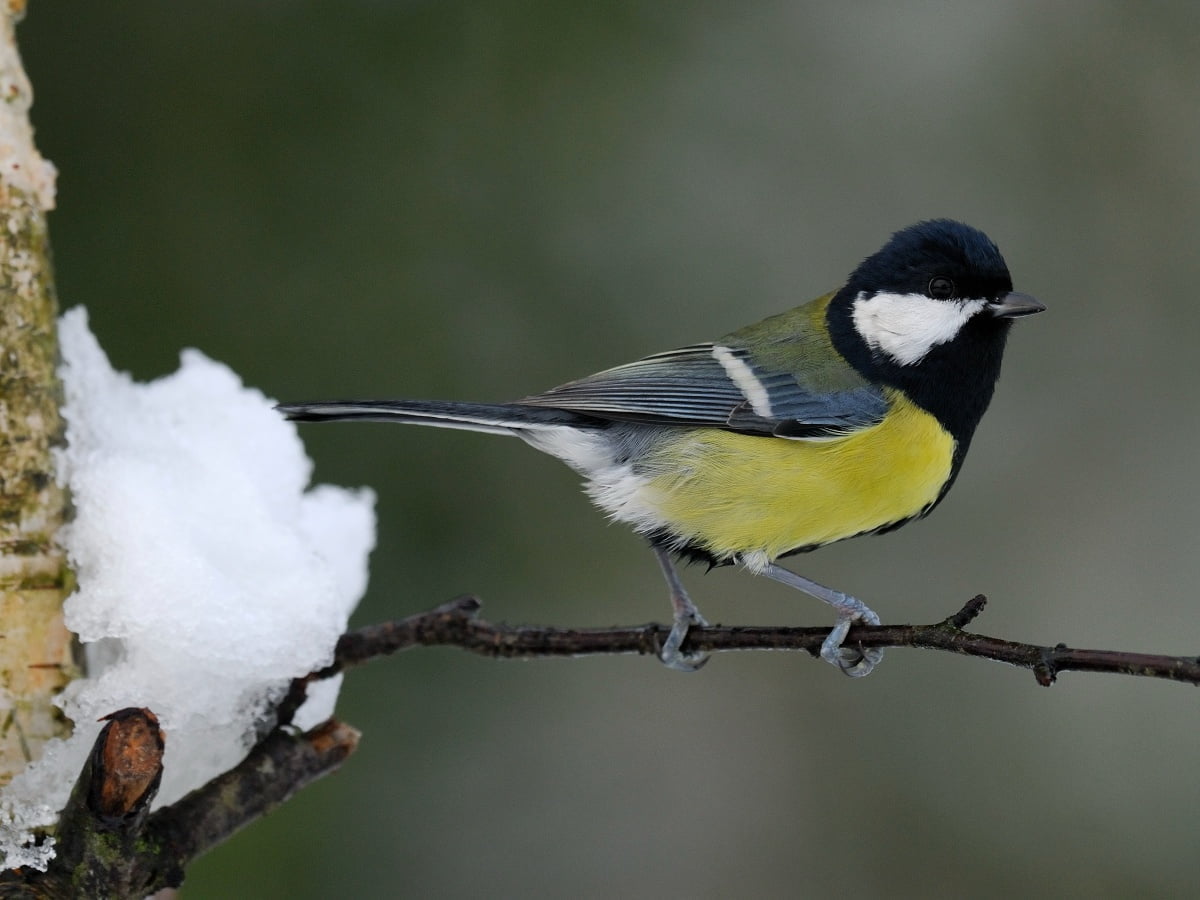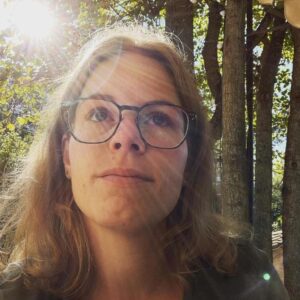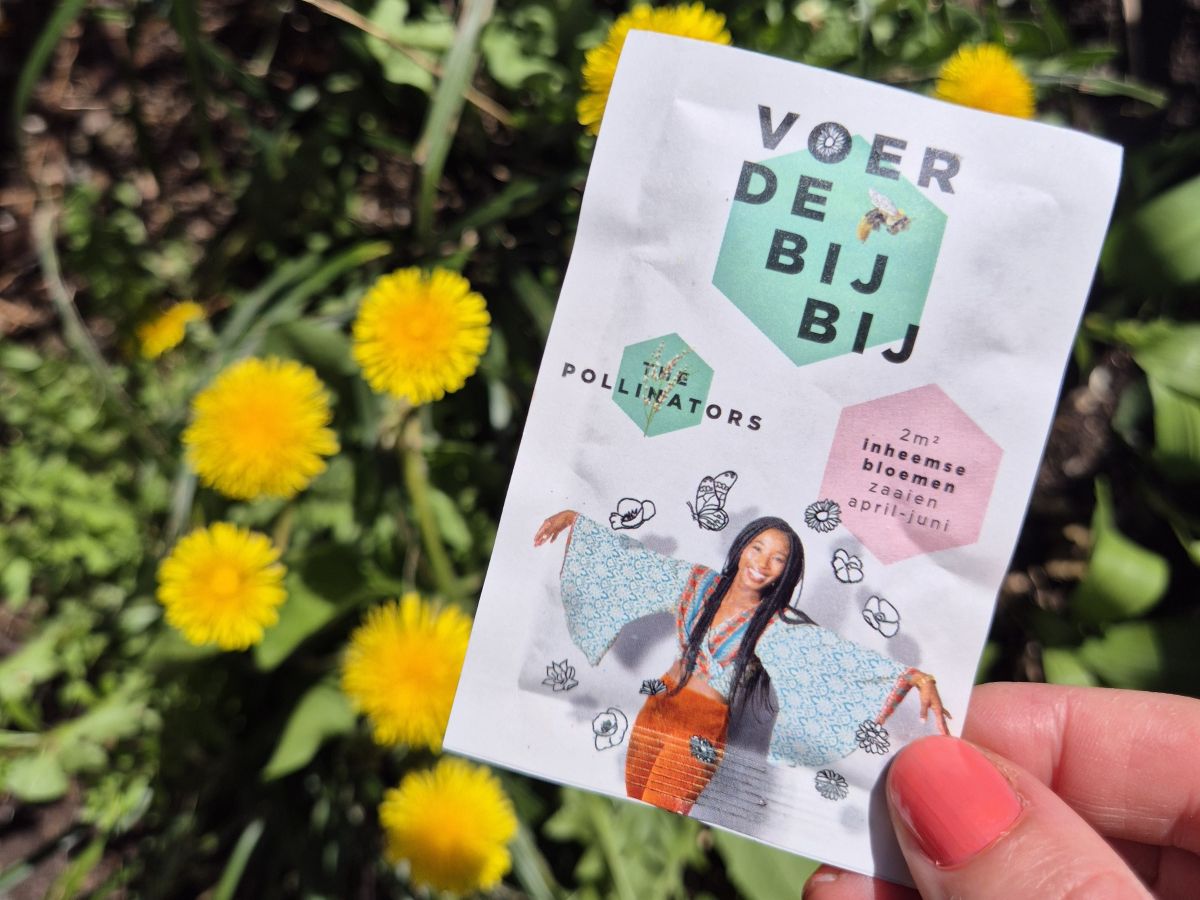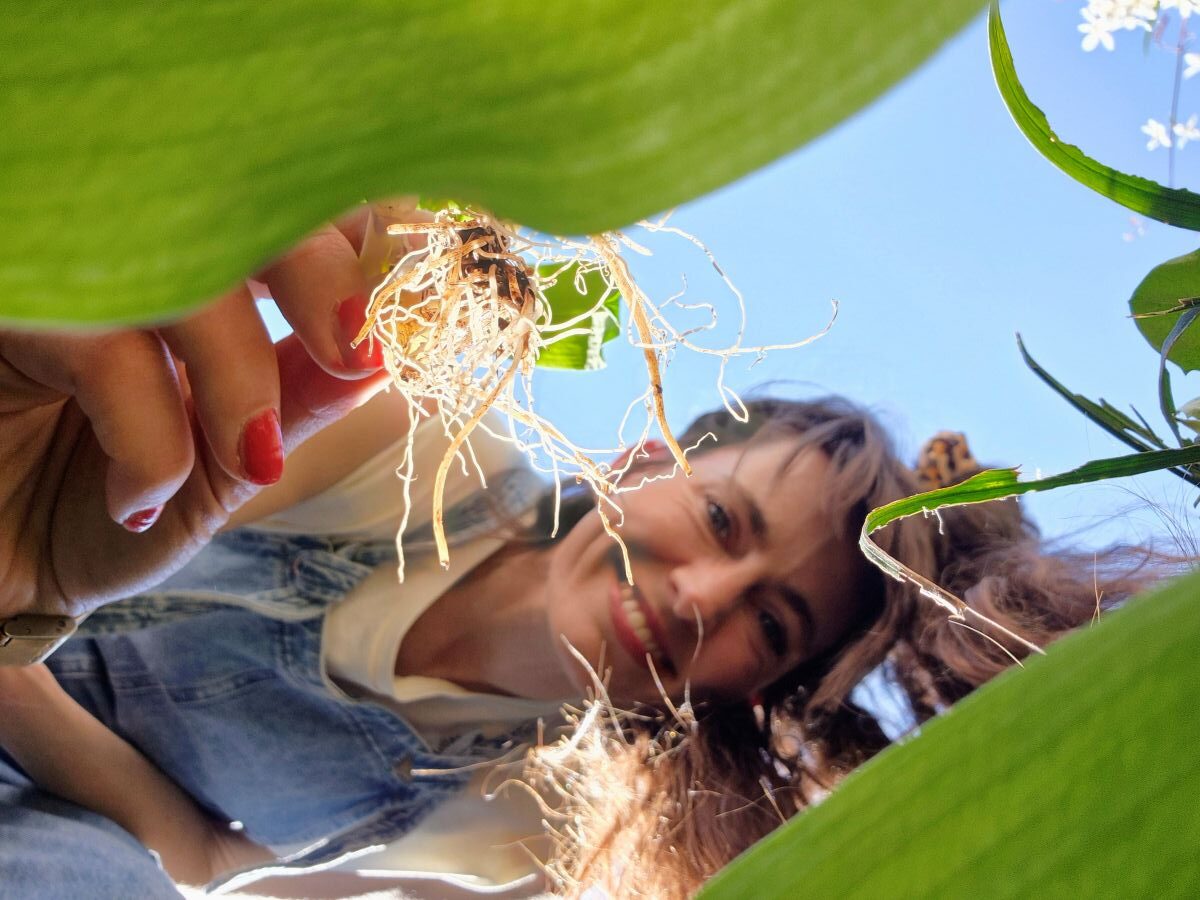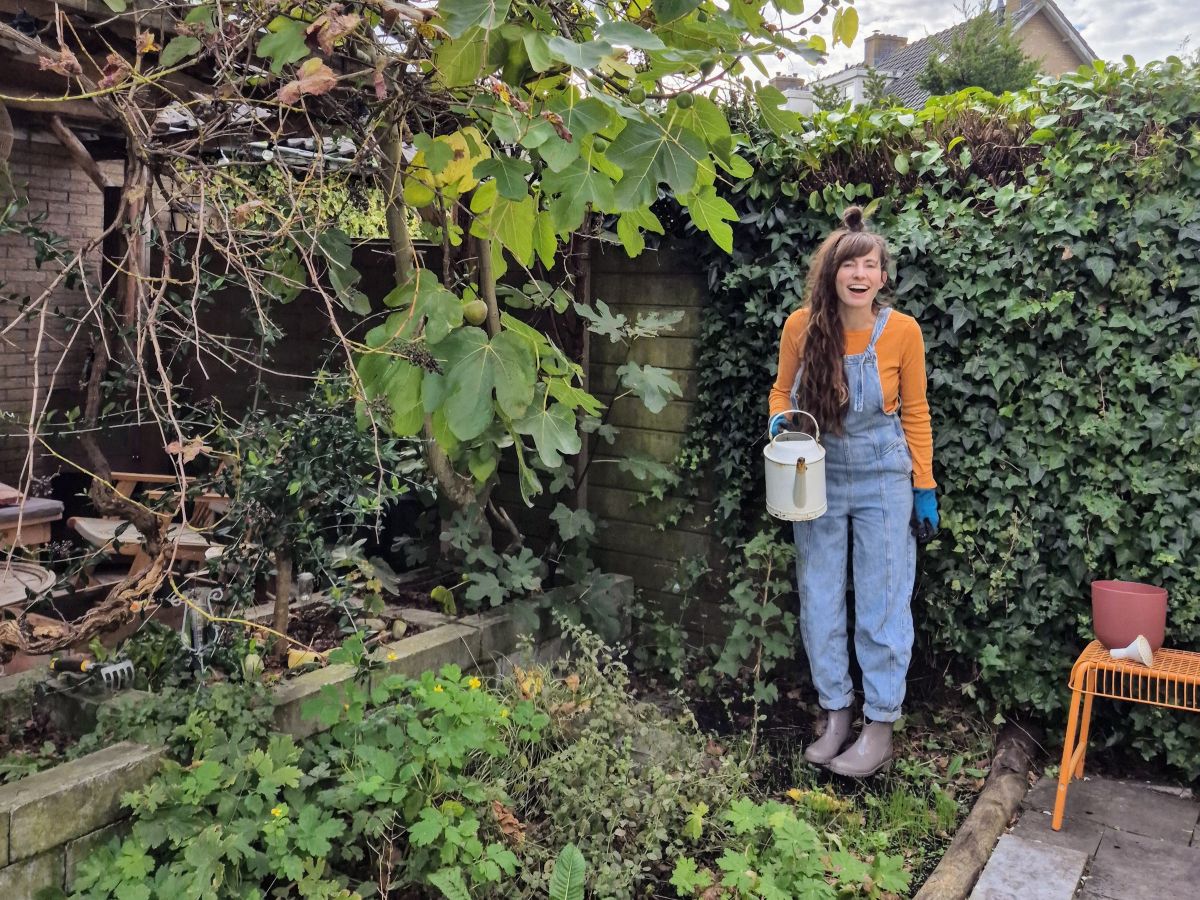With their presence, birds literally and figuratively add colour to the garden or balcony. By choosing the right plants and shrubs and landscaping the garden in a bird-friendly way, you can attract birds all year round and perhaps welcome new species. But how do you go about this?
Birds in the garden and on the balcony
In autumn and winter, birds are busy looking for food to keep their bodies warm. More and more gardens are unfortunately turning into tiles or pebbles, but the environment is also changing with more buildings, asphalt and concrete. As a result, there is less food available for birds and other animals. In your garden, you can help birds by having the most diverse planting possible.
Plants for a bird-friendly garden
It is best to design your garden so that there is a variety of food for birds to find, that matches what the bird needs. A varied garden with native trees, plants, shrubs, berries, insects and some longer grass, birds love that. And also provide a dense or spiny bush, where they can hide and nest.
- The firethorn, for example, is an ideal plant for birds. It contains thorns that allow birds to shelter and find protection there (cats and birds of prey cannot reach it). Wrens, dunnocks and blackbirds like to build their nests in it. After flowering in spring, berries appear that are edible for birds. Finally, even more good news: bees, butterflies and bumblebees love the white blossoms of the firethorn. So in addition to birds, you also help other insects. The firethorn can be planted as a hedge or grow against a wall.
- Besides a firethorn, you can also consider a holly, hawthorn or blackthorn. Like the firethorn, these are also all dense spiny shrubs suitable for birds to nest in.
- Another garden topper (my favourite), is the currant tree, which is a must for any garden. It can grow several metres tall but is also easy to contain, making it suitable for smaller gardens. If you place it in your garden now, you can enjoy it three times over: the blossom in spring, the currants that follow and the colours in autumn (golden yellow and coppery red). Birds love the currants and they are also edible for humans.
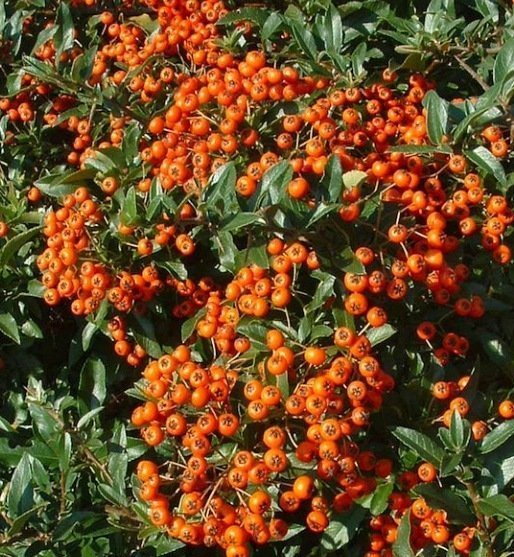
Poison-free gardening
Autumn is the ideal time to add new plants to your garden. In a previous article, I talked about the importance of poison-free plants. And certainly the use of pesticides is also disastrous for birds. When insects die because of the poison, birds also have less to eat. Besides birds, other animals that eat insects include frogs and bats. Together, we can really make a difference by not using poison! Now is also the time to plant your organic flower bulbs, again, buy them poison-free. Check out my article on flower bulbs here.
What do birds eat in the garden?
Each bird has its own needs and a particular beak shape that allows them to process different types of food. There are seed eaters (sparrows, finches, greenfinches), insect eaters (dunnock, robin, wren) and (rotting) fruit eaters (starling and thrush). Depending on what you offer in your garden, you can expect these birds.
To provide a year-round food supply for birds, the Bird Conservancy has created a veritable berry calendar on which you can clearly see when which berries are edible for the birds.
Supplementary feeding, yes or no?
Opinions are sharply divided on whether or not it is a good idea to supplement feed birds. Opponents say you would spoil the birds too much and they would learn to look for food themselves. The Bird Protection Society has a different opinion: you can supplement birds all year round, because they use a lot of energy all year round. In winter to keep themselves warm (a bird's body temperature is 40°C), in spring to lay eggs and raise their young and in autumn they build up reserves for the winter. Did you know that birds sometimes lose as much as 10% of their body weight in a cold night? You can't overfeed birds; when their hunger is satisfied, they stop eating. If you have a bird-friendly garden, then supplementary feeding is not necessary in spring because there will be plenty of food available then.
What do birds need in the garden?
In spring, they actually need protein and calcium to lay eggs and feed their young. They get protein from caterpillars, insects and worms. Lime can be supplemented in the form of boiled and crushed egg shells. In winter, birds mainly need fats and extras in the form of seeds, sultanas, fruit, fat balls and peanuts. Another tip: do not buy fat balls in a plastic net. Birds can get tangled in the net and often it falls to the ground and the plastic ends up in the soil. There are many hangers for fat balls for sale. You can also make your own fat balls. Check out this DIY!
Besides food, water is also important for birds. It is important that this water is without added salt (unhealthy) and/or sugar (they also bathe in it). You don't need to offer water in severe frost, they don't need it then and the water cools down too quickly, so it takes extra energy to maintain their body temperature.
Points to consider when feeding
Feeding too much leaves food lying around and this attracts pests. Rather, feed small bits more often. And make sure you buy responsible and well-composed feed.
Nest boxes for birds in the backyard
Finding a nesting site is also increasingly challenging for birds, partly because holes and gaps are being sealed and in gardens, hedges are being replaced by fences. As a result, birds' natural habitats are disappearing. In addition to planting bird-friendly plants, bushes and trees in your garden, you can also hang nesting boxes. Just as each bird species has different food requirements, they also have different wishes for their nest box. This is partly because some birds are larger than others and therefore require a different size of entrance opening. Usually, there are four sizes of entrance openings and, in addition, you have half-open nesting boxes for robins and blackbirds.
It is therefore good to know which birds are common in the place where you live. After all, it is a waste to furnish a shelter if the birds do not occur in the vicinity. If you do not know which birds occur in your area, then this bird check a useful tool.



The frozen flower is sunflower. By not cutting it off after flowering, but leaving it standing, birds can eat the seeds. The goldfinch, in particular, loves this. This is also the bird in the photo. The other photo is an example of a bird feeder.
Making and hanging a nest box in your garden
In autumn, it is also time to clean the nest boxes that are already there with hot water, the breeding season is now over. You can also hang new nesting boxes then. The opening of a hive should preferably face north-east, so that the wind and sun have the least effect on it. Hang a nesting box at least two metres high, otherwise it becomes a very easy snack for the neighbouring cat. Birds prefer to nest in a place with a clear flight path, with some vegetation near the nest box. The advantage of hanging a nesting box in winter is that birds can take shelter in it on cold nights. And if they like the place, you have a chance that they will also nest there in spring.
If you want to hang several hives, do not hang them too close to each other, as this causes arguments. Hang hives of different species at least three metres apart and hives of the same species at least ten metres apart. Choose a nesting box made of solid material such as wood (oak, beech or waterproof plywood) at least 1.5 centimetres thick, a leak-proof roof and a sturdy hanging construction. Then the birds and you will enjoy it for years. Making your own nest box can of course, durable and fun to give as a gift (Saint/ Christmas/ birthday).
Will you also help the birds?
In summary, birds need a green and biodiverse garden with food, water, nesting and shelter opportunities. It is preferable to provide this as naturally as possible and, in addition, you may certainly help the birds by feeding them and hanging nest boxes. Every garden counts, whether you have a balcony, a small (city) garden, a large garden or a yard.
Would you like to read and know more about birds?
- Book: ANWB Bird Guide to Europe
- Book: A garden full of birds
- Book: Pocket book for the bird garden
- Children's book: ‘This is my garden!’
- Bird Memory
- Board game: Wingspan
- Free online birding course (Bird Protection)
More green tips from thegreenlist.nl
- Also see: winter time = the time for vegetable garden planning.
- Also see: native plants: why are they important?
- Also see: help the hedgehog in your garden!
- Also see: Help nature, buy poison-free garden plants.
Sources: Natuurmonumenten, Bird protection. Photo credits: Jelle de Jong (main image), other images: Amanda Sniekers.

